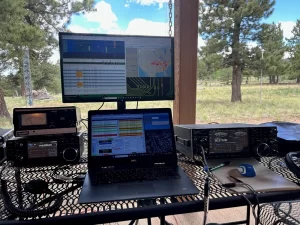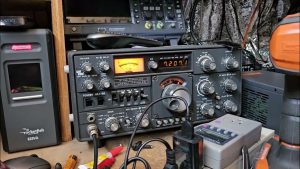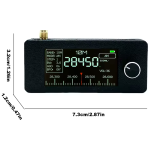Description
Unlock the full potential of the Automatic Packet Reporting System (APRS) with this comprehensive, engaging, and easy-to-follow guide designed for both beginners and seasoned ham radio operators. Whether you’re looking to set up your first APRS station, enhance your emergency communications, or explore advanced applications like satellite tracking and IoT integration, this book has you covered.
Written in a clear, approachable style, Mastering APRS breaks down everything you need to know—from setting up budget-friendly APRS stations to leveraging APRS-IS for global connectivity. Learn how APRS is used for real-time tracking, messaging, weather reporting, search and rescue, and even high-altitude ballooning. Packed with real-world case studies, expert tips, and practical tutorials, this book makes APRS accessible, exciting, and indispensable for the modern ham.
If you’re ready to future-proof your ham radio skills, expand your technical knowledge, and build your own APRS legacy, this book is your ultimate guide to mastering APRS!
Table of Contents
Chapter 1: Introduction to APRS: The Fusion of Tradition and Technology
- The evolution of ham radio and its digital transformation
- Understanding APRS and its role in modern communication
- Why APRS remains relevant today
Chapter 2: The History of APRS: From Packet Radio to Global Networks
- The origins of APRS and its creator, Bob Bruninga
- Early applications and technological advancements
- The integration of APRS with the internet and satellite systems
Chapter 3: Getting Started with APRS: Tools, Hardware, and Setup
- Essential APRS equipment (radios, TNCs, computers, and mobile devices)
- Software options: APRSISCE/32, UI-View, PinPoint APRS, etc.
- Choosing a platform: Mobile, desktop, or embedded solutions
Chapter 4: The Language of APRS: Packets, Beacons, and Data Frames
- Understanding APRS packets and how they function
- How beacons, bulletins, and messages work
- Encoding and decoding data frames
Chapter 5: APRS Callsigns, SSID, and Symbols
- Callsign structure and SSID extensions
- APRS symbols and their meanings
- Best practices for selecting SSIDs and icons
Chapter 6: APRS Digipeaters
- What digipeaters do and why they are important
- Setting up a digipeater for reliable packet transmission
- Advanced digipeater configurations (WIDEn-N, RELAY, TRACE, etc.)
Chapter 7: APRS Gateways (iGates)
- The function of an iGate in APRS networks
- Setting up an iGate and connecting to APRS-IS
- Managing network traffic and preventing congestion
Chapter 8: Implementing APRS Weather Stations
- How APRS integrates with weather reporting
- Setting up a weather station with APRS
- Using APRS for real-time weather alerts and analysis
Chapter 9: How APRS Relates to DMR Ham Operations
- The synergy between APRS and Digital Mobile Radio (DMR)
- Configuring DMR radios for APRS
- Using APRS in conjunction with digital voice networks
Chapter 10: Mapping and Tracking: The Heart of APRS Applications
- GPS tracking and mapping in APRS
- Popular mapping tools and software
- Applications for search and rescue, outdoor adventures, and logistics
Chapter 11: APRS in Emergency Communications
- How APRS enhances disaster response and emergency coordination
- Real-world case studies of APRS in emergency scenarios
- Setting up an emergency-ready APRS station
Chapter 12: Advanced APRS Applications
- Cross-band communications using APRS
- Remote control and telemetry via APRS
- Experimenting with custom APRS projects
Chapter 13: Community Building and Education
- Using APRS for ham radio outreach and training
- Organizing APRS-based community events
- Promoting APRS to new and young operators
Chapter 14: Setting Up a Budget APRS Station
- Cost-effective ways to get started with APRS
- DIY and open-source hardware solutions
- Using Raspberry Pi and other low-cost computing solutions
Chapter 15: What is APRS-IS? (12 pages)
- The global APRS-IS network and how it works
- Bridging RF APRS with the internet
- Best practices for accessing and contributing to APRS-IS
Chapter 16: The Future of APRS
- Evolving trends in APRS technology
- The role of APRS in the future of ham radio
- Potential innovations and new applications
Chapter 17: Building Your APRS Legacy
- How to contribute to the APRS community
- Documenting and sharing APRS knowledge
- Leaving a lasting impact in the world of ham radio
Appendices
- Glossary of APRS terms
- Recommended resources and further reading
- Frequently asked questions


















